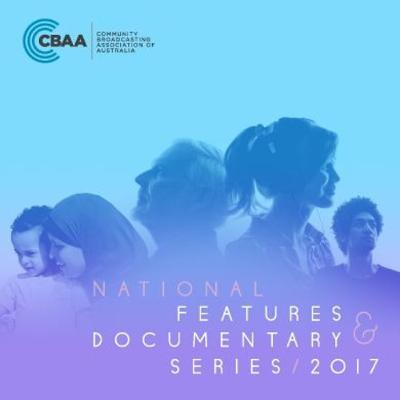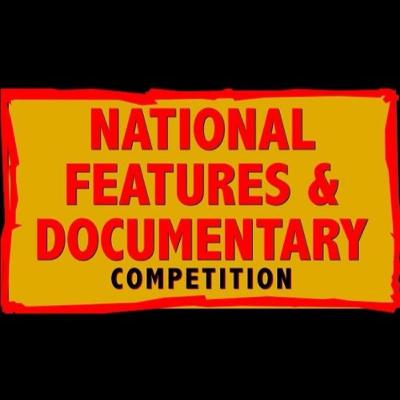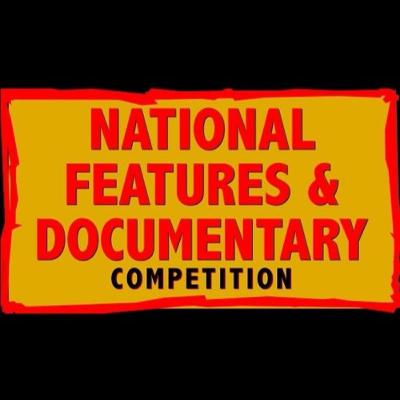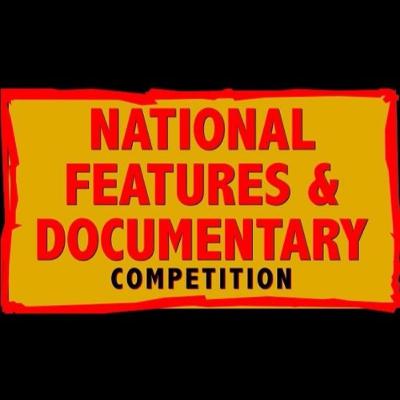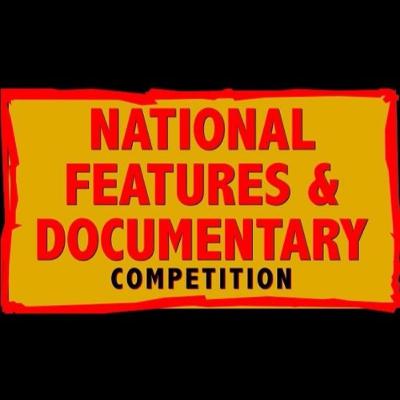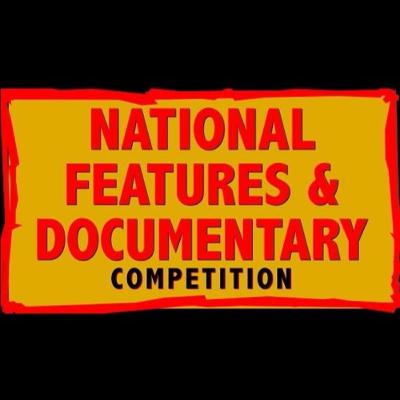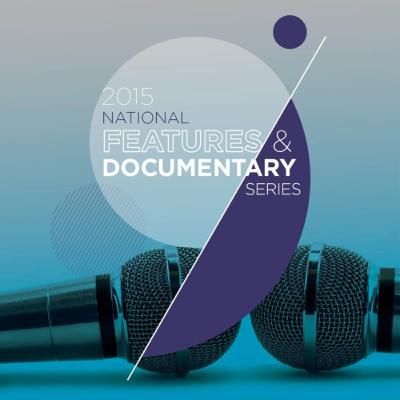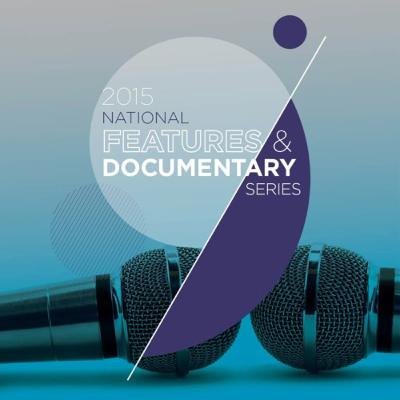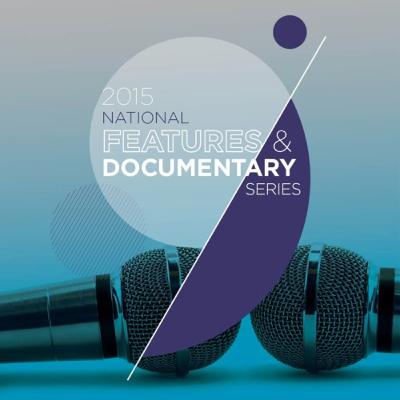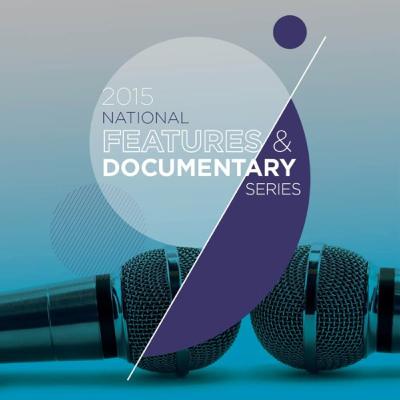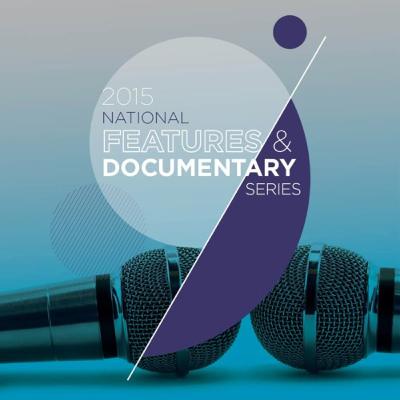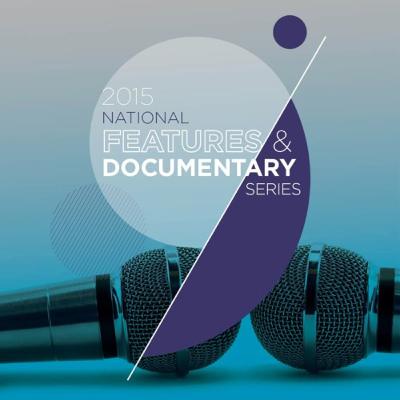Discover National Features & Documentary Series
National Features & Documentary Series

National Features & Documentary Series
Author: Community Broadcasting Association of Australia
Subscribed: 16Played: 178Subscribe
Share
© 2025 Community Broadcasting Association of Australia
Description
From water and drought to coal mines in small towns, a neighbourhood's safe-injecting room to the Country Women's Association's brand of feminism, each year these and more stories are told by Australian communities in their own words through the National Features and Documentary Series.
City to the bush, coast to coast, since 2013 the NFDS has commissioned audio works from all over Australia by budding community radio producers.
Produced for the Community Radio Network at the Community Broadcasting Association of Australia with training and mentoring from the Community Media Training Organisation.
72 Episodes
Reverse
2017 National Features and Documentary Series Showreel by Community Broadcasting Association of AustraliaSee omnystudio.com/listener for privacy information.
By Melanie DohenyI am 46, single female with no kids. I find loud noises and shopping centres extremely stressful. Then you add small children having tantrums and I find the experience completely intolerable. Why can’t parents just bloody-well deal out some discipline and consider those around them? I just don’t understand why they just can’t control their children and stop giving in to the tantrums and drama. Seriously, just shut up!Asperger’s, I mean really what is that? A type of green stalky vegetable? Well that’s what I thought until I began helping at a charity called Bellamour west of the regional town of Toowoomba in South East Queensland.Bellamour provides equine and farm based therapy for people with autism. During 2013, I was employed by Bellamour to help secure funding for a sensory garden and infrastructure to facilitate the equine therapy programs. This was when I realised that I had absolutely no idea what AUTSIM was. Not only that, I completely underestimated the stress that accompanied parenting a child with autism.Autism isn’t an intellectual disability and not a mental health issue. It is an extremely complex disorder that affects many aspects of how a person with autism's brain works. I don’t think autism is a disability. The disability lies in how we treat those with autism.The journey of the last 3 months in making this documentary has been one of great personal growth. I also now understand better why I find loud noises and shopping centres extremely stressful. But that is story for another time!Meet: Treena Brown, CEO Bellamour and FriendKaren Illife – Volunteer at Bellamour and Mother of two children with AutismDylan – VO talentJames Illife – Son of Karen, and future General Manager of BellamourAudrey – my trusty 4WD LandcruiserSee omnystudio.com/listener for privacy information.
By Kate ElliottNothing says ‘Australia’ like the kangaroo. From the 1960’s TV sensation Skippy the Bush Kangaroo, the green & gold Made in Australia logo and the Qantas flying kangaroo to indigenous dreamtime mythology.The kangaroo is an icon that crosses generations and cultures.You possibly even have a few kangaroo embossed dollar coins jangling around in your pocket to pay for your morning coffee.The kangaroo is everywhere.And yet, when was the last time you actually saw a real-life bounder; a mob of Australian kangaroos.What's up Skip? is a radio feature that asks what is it like to be an Australian kangaroo – both loved and labelled a pest in your own homeland.The program examines our relationship with the kangaroo and questions how our attitudes towards this native animal have shaped government policy, industry practices and media representation.Have we all, too readily, sung along with the commercial industry's catchy tune of kangaroo meat being 'humane, necessary and sustainable’?See omnystudio.com/listener for privacy information.
By Maddy MacfarlaneSo much in my life overlaps with music.I’d say it’s my number one passion. And my other passions, well, they’re interwoven with music as well somehow.Because…when I hear music, I hear so much more.And when we talk about music, we talk about so much more.What We Talk About When We Talk About Music is a documentary piece about a unique music group in Melbourne. The group is made up of members from the Asylum Seeker Resource Centre - diverse individuals positioned in such diverse circumstances, but all seeking a safe future in Australia.This documentary focuses on these musicians, and what they achieve together every Wednesday evening at the group's rehearsals. What occurs in rehearsals is more than making music, and what we talk about turns out to be much more, as well.Music is culture. It is tradition, and identity.It is celebration, and ceremony, and protest.It is therapy, it is family.It is contact, engagement, language and place. Over a few months, in making this documentary together with the musicians, I’ve come to know the group and the individuals, and learn their songs. And they’ve come to learn a lot about me and about community radio.In fact, I’ve learned a lot about Community Radio, too. I’ve realised more significantly the space for expression that community radio provides, and about the politics of voice from individuals who can’t always use their names.I see how community radio has a great capacity for making radio with others, and not simply about them.So listen and hear these musicians, their music and their voices.Hear all the things we come to talk about when we talk about music.Thank you to the ASRC Music Group for their friendship, creativity and hard work. You can learn more about ASRC and its work here.Thank you to Giordana Caputo at CMTO for the generous and thorough training that saw this piece come to fruition, and to the project mentors.Thank you to my home station PBS for supporting this piece.See omnystudio.com/listener for privacy information.
By Wayne HallFrom Kings Cross to the Largs Pier HotelIn Sydney 2000 my mate Budgie was telling me a story of a band that he saw in Adelaide in 1980. Budgie recalls a harmonica player that played hard and a band that shook the foundations of the Arkabar Hotel in Adelaide. The years go past, and I'm trawling through 7 inch single records for a jukebox restoration, when I see one from a band called Mickey Finn. A quick phone call to Budgie confirms that this was the band that he saw New Year's Eve 1980.Researching on the internet, there was little about this band, and even less on the harp player called Uncle. One lead I did have was that well-known Aussie rocker John Swan (Swannee) had provided back-up vocals on their album. When I was in Adelaide about 2 years ago (2012), Swannee was playing a gig, so I made contact with his agent and arranged to meet with him. Back then I didn't ask him about the Mickey Finn band, we mainly discussed ideas for songwriting. Brief as it was.But there was a singer I approached earlier that week in an Adelaide bar, and I asked if he knew of the band Mickey Finn, and more importantly, did he know 'Uncle' John Ayers the harp player. He said he thought that maybe Uncle was driving taxis, and had sort of disappeared from the music scene.I always felt that someone should do a feature on finding this harp player. It's all good hoping that someone someday will do the research, and to just wait for that day. That day might never come. Thanks to the CTMO and CBAA for providing the support and knowledge to undertake this journey, I took up the challenge, and during this time, numerous unplanned events unfolded.Ron Alphabet, the promoter of bands at The Largs Pier Hotel during the 70s and 80s fell ill, and a set of bands was united to play a concert for him. In that line up, some of the Mickey Finn band would be performing in new separate groups. I got to meet Uncle in a chance meeting at the concert, and also a planned meeting with Mauri Berg, the guitar player from The Mickey Finn Band. It seems Adelaide is a massive breeding ground for the Australian pub rock sound that we know today. This band has played and has supported household names like Jim Barnes, Swannee, Bon Scott, Barrie McAskill and Dutch Tilders. Jim Barnes recruited Bruce Howe (bass) and John Freeman ( drums) from the Mickey Finn band when he went out solo this time 30 years ago.From this I have discovered old/new Australian music to follow up on, bands like Headband, Hush, Wendy Saddington, Fraternity, The Levi Smith Clefs, Billy Thorpe and Lobby Loyde, Kevin Borich, Gwyn Ashton, David Blight and the Flyers. Also international acts like The J Geils Band, and blues men Little Walter and James Cotton. These were bands that influenced Uncle in his style of playing.A few of the members have been nominated to be inducted into the South Australian Hall of Fame later this year (2014). One day I'd like to sit down with Uncle and re-record an old tune, or even cut something new.See omnystudio.com/listener for privacy information.
By Nikki MarcelAdelaide tap water tastes disgusting.It’s renowned for being the worst in Australia and people go to great lengths to get good drinking water from anywhere but the tap. I used to get rain water from my Nans house in the Adelaide hills but she’s moved and I really miss the taste of her old galv tank. It’s a unique flavor that’s quite different from plastic tanks or bottled spring water. I had to find a new source of good drinking water.I’ve often looked with curiosity at the people lined up to get water from the West End Brewery Charity Fountain on Port Road in Thebarton. I drive past it every day and there’s always a queue of cars in the driveway with people standing around filling all kinds of containers. They pay $2 for 15 litres of filtered groundwater from an industrial strength water dispenser. In 12 years it’s raised $2 million dollars, which the Brewery donates to various local charities.Not only does the constant amount of people at the Fountain catch my eye but it’s the diversity of people that makes it really interesting. There’s all ages, genders and cultural backgrounds. I wonder how people got water before they came to Australia? Did they have to travel far or queue for it like they are now? I imagined they were shocked to find the water tasting so bad here and bet they didn’t picture themselves needing to queue for good drinking water in Australia – after all this is a ‘first world’ developed country.So I stop to find out – what’s so good about the water at this modern day village well? I meet Australians originally from Laos, Burma, Italy, America, India, Croatia, Kazakhstan, Ethiopia, Vietnam, China, Cambodia, Serbia, Congo, Philippines, Liberia, Tanzania, France and Greece. They all have interesting stories to tell and all share a deep conviction that the Brewery’s water is the best in town. Through a discovery of different cultural and spiritual attitudes to water I’ve developed a new appreciation of water and finally get it - water is life!See omnystudio.com/listener for privacy information.
By Tiarney MiekusRiot Grrrl: loud, brash, ferocious.Riot Grrrl is not simply a period of feminist punk in the early 90s, but is a movement whose ongoing thoughts, ideas and challenges have enriched human liberation. Riot Grrrl is a recurring motif for empowering females, placing Grrrls at the centre of music and for showing everyone the saviour of rock and roll: women.I started ‘This is Not a Test’ with a thought: What did Riot Grrrl mean in the 90s and what could it possibly mean for women in Australia now? As a 22 year old who is still trying to figure out the ties between womanhood, feminism, music, culture and politics in Australia, one of the most telling narratives that has framed these elements has been Riot Grrrl.‘This is Not a Test’ has since taken me from Riot Grrrl’s first days in Olympia, Washington, to its small manifestation in Brisbane in the 90s, to Pussy Riot in Russia and finally to the here-and-now: Brisbane 2014. If music tells the story of ourselves and our world – our oppressions, desires, anger and humanity – then this documentary uses Riot Grrrl and music as a lens for women in contemporary Australia.‘This is Not a Test’ not only has a jolting all-woman soundtrack from Bikini Kill to Huggy Bear to Feathers, but a series of interviews that point to the complexities and contradictions of Riot Grrrl, feminism and society. This includes: Christine Barrett: A former Riot Grrrl in Hussy and current youth culture lecturer at GriffithEverett True: Music journalist and writerAlex Gunk: Lead-woman of Gunk and creator of fem-zine SlubsBek Moore: Lead-woman of bands Scrabbled and ClagBianca Valentino: Renowned zine-maker and writer known for Conversations with Bianca. Like any liberating movement, Riot Grrrl is many things to many people and ultimately it enhanced a culture that still exists today - a culture that stares down gender imbalances in art and politics and liberates women from oppressive institutions.See omnystudio.com/listener for privacy information.
By Ellie FreemanOver 150,000 Koreans have been adopted overseas since the Korean War Armistice in 1954. And I am one of them. I was born in South Korea. I was adopted to Australia when I was a baby and raised by white Australian parents. I never knew my birth parents. All I knew was that my mother was not married when she became pregnant with me and, in 1980s Korea, could not afford to support me and had to give me up for adoption. When I met a Korean American adoptee in early 2013 who mentioned that some adoption files are falsified, I wanted suddenly to find out the truth. With the support of a Korean adoptee support organisation the Global Overseas Adoptees' Link, I returned to Korea for the first time since I was born and searched for my birth parents.Along the way, I met other Korean adoptees, saw the country where I was born, learned more about adoption and - unexpectedly - found my birth family. The idea for documenting this experience began when I was in Korea last September, so most of the atmos and scenes from my trip in this documentary are real recordings from that time. Judging from all the questions I am asked about my birth and where I'm from, I see that there are many myths and misconceptions about international adoptees. Not all of us want to search for birth family. Some of us have no desire to return to our home country. Some of us feel more Australian than Korean, or badly want to get in touch with our Korean roots, or simply don't know. Some of us have tried to search but unfortunately failed. Some of us have had happy reunion experiences, and some not so happy. International adoptees often battle issues around ethnic identity and isolation due to our unusual family circumstances. But in the modern age of social media, adoptees are establishing ways to organise activism, education, support, and outlets to express ourselves. We are a growing community with many diverse views, experiences and stories. I am telling my own story of birth family reunion in Korea along with the voices of other Korean Australian adoptees, academics and activists - to give an insight into our reality. These voices are:Kerrie Freeman - my adoptive motherHeeRa Heaser - Korean American adoptee, PhD student the University of New South WalesSeon Kee Woodley - Australian Korean adoptee from Melbourne, originally PerthTiarne Double - Australian Korean adoptee from TasmaniaPia Meehan - Australian Korean adoptee from PerthHana Crisp - Australian Korean adoptee from Melbourne, originally HobartCarly Reid - Australian Korean adoptee from Brisbane, originally PerthTim Vanderburg - Australian Korean adoptee living in South Korea, originally SydneyAndrea Kim - Korean American adoptee, Fullbright Scholarship researcher currently living in SeoulMy Korean birth motherPark Young Hee - Korean Australian actress and performer, who acts as the voice of my adoptee social workerSee omnystudio.com/listener for privacy information.
By Carol DowlingIn Western Australia, Aboriginal children make up more than half of all children in out-of-home care or what is known as foster care. Yet Aboriginal children only make up 5 per cent of the population in the state. Aboriginal foster carer Carol Dowling goes on a journey to investigate whether she and her community are witnessing yet another stolen generation.See omnystudio.com/listener for privacy information.
By Yen Eriksen, Adelaide Rief and Farz EdrakiIn the spirit of the second decade of the twenty-first century, we’ve named our documentary using a ubiquitous marker of our times: the hashtag.#CityOfLove was trending on Twitter as the ACT government made moves towards making laws to create marriage equality in 2013. As the conversation around marriage equality grew in the media, we wanted to ask: why marriage?How did marriage become the focal point for queer rights in the Territory (and wider Australia)? Is marriage even a good thing to be fighting for, anyway? Those questions — and many, many more — became both the hardest and most enjoyable part of making this feature.In an attempt to find some answers, a big part of our documentary became our own conversations around marriage equality. In many ways, the conversations came out of the informal chats (and occasional arguments) we would inevitably fall into during our meet-ups — helped along by cups of tea.Our late-night discussions over marriage, the politics behind it, the ways that the law shapes us and our interactions with the world invariably led us to talking about love: finding it, having it, recovering from it. And it's those conversations that ended up bringing us each to some revelatory moments: family recognition as a crucial reason as to why marriage is held dear to some; the effect of the law and social structures on how we value relationships; the obvious need for reform.We wouldn't have made this feature without the insights and erudite conversation of our guests. Or without the amazing mentoring and support from Kevin Klehr, Martin Walters and Giordana Caputo, who guided us through our hiccups and (many) false starts.And it certainly wouldn't sound as lush without the music of (mostly) local Canberra artists, Pocket Fox,Fossil Rabbit, Oxen, Reuben Ingall and The General Assembly. Oh and John Paul Young for "Love is in the Air".We hope the interviews and conversations you hear spark discussions in your own life about marriage and movements for change. How has the the law has shaped you in ways you wouldn’t necessarily expect? Perhaps, like us, you’ll be left with more questions than answers. While the status of marriage equality in Australia still hangs in the balance, let us take you on a trip to where it all started: the #CityOfLove.See omnystudio.com/listener for privacy information.
By Annie McLoughlinIMAGINE You get a letter.Your house is to be 'compulsorily acquired' for a toll road.The house you were born in.The house you have lived in for 70 years.This is what happened to Keith Fitzgerald, residen of Collingwood, Melbourne in 2013. Keith and hundreds of other Melbournians join together in a campaign of resistance against the East West Link Project. This project plans to cut a swathe through Collingwood, Clifton Hill, Fitzroy on into park lands of Royal Park.The PicketThe protest starts with a six month long picket around the Linking Melbourne Authorities exploratory drilling. Stationed along the main thorough fare of Alexander Parade morning commuters are given a front row seat to the struggle. Hundreds of police protecting drilling sites & the demonstrators who are calling for better Public Transport not a new toll road. Toot for Trains.The Rally & Legal ActionOnce the drilling stops campaigners go on outreach tours to other Victorian communities. They build up to a Rally and take legal action. Victorian's are not going to go quietly when it comes to tying up $8 billion of public money without a business plan from a Government elected on a pro-public transport platform.Timing is EverythingVictoria goes to the polls on Nov 29th, 2014. No Tunnel No Way takes you to just before the finish line. The protest has made public transport a major election issue. The trustworthiness of a Government that tries to solve high unemployment with a toll road designed in the 1960s is in question. What will the Labor opposition do? No Tunnel No Way puts you at the moment of community action against arrogant government indifference. Protesters refuse to give up 'their duty to their Melbourne'.See omnystudio.com/listener for privacy information.
By Saskia EdwardsWhen I would ask people about ketamine, for those who knew about it, a few ideas were evoked: an animal sedative, a hallucinogenic party drug or an anaesthetic for children. But when I mentioned ketamine to people rarely did anyone think of it as a treatment for depression. However, right now in clinics across Australia ketamine is being developed as a way of tackling mental illness. Hundreds of people have tried the treatment, with researchers reporting a more than 60 per cent success rate. The drug is almost side-effect free as well, while regular medications for depression are usually riddled with additional problems. Even more, ketamine has been off patent for some 50 years, so clinicians say it costs a fraction of the price of traditional antidepressants. So why isn’t this highly effective, cheap and almost side-effect free drug being widely used? And why is it almost completely unknown? I went to a clinic in Brisbane to find out what the drug does, why it’s so successful and what’s holding it back. I discovered incredible stories of recovery from patients who said ketamine transformed their lives. I saw the excitement from psychiatrists who believe in the future of the drug. And I found out about the pitfalls of the treatment. Ketamine’s ultimate downfall is its history as a party drug. While clinicians insisted the way they administered the drug had no recreational effects, patients reported having feelings like those produced by LSD and ecstasy. It’s what created controversy around the trials of ketamine as an antidepressant in New Zealand, and saw an investigation into its use. However, the psychiatrists trialling the drug are determined to make it available to thousands more people. And perhaps despite its struggles, ketamine will be the future for the treatment of mental illness.See omnystudio.com/listener for privacy information.
By Jane ArakawaListen to 'Australian Radio Pioneer Wound Up the Cat and Put the Clock Out'How and where you access your favourite radio programs is changing so rapidly that it can be challenging to keep up. It may be reassuring to hear that it was only about 100 years ago that radio was the new emerging technology, and an experimenter named Charles Maclurcan spent much of his time educating the general public on how to hear a radio broadcast signal.My passion for radio and the immediate, intimate connection it creates between us, lead me to discover more about this dedicated Australian radio pioneer and how he faced his technical hurdles and engaged his audience over various media.I learnt that Charles Maclurcan erected aerial masts on top of the first Wentworth Hotel located on Church Hill, Lang Street Sydney in 1911 and was communicating with incoming and outgoing ships. By early 1922 he was broadcasting an entertaining and engaging radio program each week with a program guide published in the weekly newspapers of the time. He was issued Licence No.1 in December 1922 and continued his broadcasts and experiments until 1927 when he was required to take over the management of the Wentworth Hotel until its sale in 1950.I discovered that some of Charles Maclurcan’s equipment was held by the Powerhouse Museum in Sydney and also on display at the Radio Museum at Kurrajong, NSW. It was at Kurrajong that I first heard of an ongoing discussion among radio historians regarding which station can lay claim to holding Licence No 1 in Australia. Charles Maclurcan returned to his love of radio in his retirement and his passion and dedication resulted in the Australian Government declaring upon his death in 1957 that his call sign 2CM was never to be re-issued.Feb 1923 Josie Melville at Strathfield copyright 1924 - Charles Maclurcan talks to England copyrightYou will hear how Charles Maclurcan engaged his listeners through multi-media platforms of the time, why historians are debating who holds Licence No.1, and how his grandsons have respectfully and openly shared his story of radio with us.I now consider Charles Maclurcan to be Australia’s first multi-platform radio producer.If you wish to discover more about Charles Dansie Maclurcan’s radio programs, technical instructions, newspaper articles, long distance records achieved and his place in Australia’s radio history, you could start at the National Library of Australia (Trove), access reference material at the NSW State Library and Powerhouse Museum, read Ron Langhan’s book The First Twelve Months of Radio Broadcasting in Australia 1923 -1924 or Australian Radio History (5th Edition) compiled by Bruce Carty Phd and visit the Historical Radio Society of Australia.See omnystudio.com/listener for privacy information.
By Meeghan Bell Listen to Red Dirt In Bondi: The Story of Building Bridges'"The facts are really not at all like fish on the fishmonger's slab. They are like fish swimming about in a vast and sometimes inaccessible ocean; and what the historian catches will depend, partly on chance, but mainly on what part of the ocean he chooses to fish in and what tackle he chooses to use – these two factors being, of course, determined by the Kind of fish he wants to catch. By and large, the historian will get the kind of facts he wants. History means interpretation." - E.H. CarrI was sitting in the packed auditorium as Gary Foley presented 'Life of Struggle' at the 2015 Marxism Conference in Melbourne. He commanded the stage, held the audience in the palm of his hand and I listened fiercely and took notes. He spoke passionately about the history of Aboriginal resistance in Australia, of which he played a central role and shared iconic images of his life including photos with rock star Michael Hutchence (pictured below). Foley also spoke about an album he'd been involved with titled, Building Bridges - Australia Has A Black History.Gary Foley & Michael Hutchence, Building Bridges 1989 Bicentenary January 26th 1988 Aboriginal Protests at Sydney HarbourIt wasn't entirely clear then of course but as I listened to Foley talk, a seed was planted and once I'd been selected to participate in the CBAA National Features and Documentary Series, the 1989 Building Bridges album and the story surrounding its creation began to absorb almost every waking moment of my life.'Red Dirt in Bondi' is a radio feature set in Sydney around the time of the Bicentenary, 26 January 1988. The key participants in this feature are Aboriginal activist and academic Gary Foley, the Building Bridges Cultural Construction Crew featuring Jim George, Tony Duke and Denise Officer (Andrew McMillan passed away on 28 January 2012) and singer-songwriter, Kev Carmody.For a rookie like myself there were significant challenges in bringing this radio story to life including the historical nature of the topic and the complex relationship between black and white Australia since 1788. Not to mention attempting an interesting and thought-provoking radio feature in under 27 minutes.The story of Building Bridges, involving a small group of people with the support of the Australian Music Industry, is as relevant today as it was back in '88. It is vital to keep re-telling and sharing this piece of history so that we may move towards true reconciliation in this country and achieve justice for Australia's First People.I would like to thank Phil Ruck, David Miller and others from 3MDR for their amazing support, the CBAA and CMTO for the wonderful opportunity but most importantly to the 'Red Dirt in Bondi' participants Jim, Gary, Tony, Denise and Kev for sharing the incredible Building Bridges story.See omnystudio.com/listener for privacy information.
By Paul ConnListen to 'Fairlight: How Australia Changed the Sound of Music'Behind this strange claim is a story that started in a Sydney basement and ended up in recording studios around the world. Along the way, the sound of music (yes, the way music actually sounds) was changed.The best part is that it all started in Australia, just because two nerdy guys thought they would push the boundaries of technology 40 years ago without ever realising where it would lead.So what was this Fairlight? Its proper name was the Fairlight Computer Musical Instrument, or Fairlight CMI for short. As the pictures show, it was a plain looking computer with a keyboard, big floppy disks and monitor, but no hard drive or external storage. It was custom built long before today's mass manufactured personal computers, laptops, tablets and more. But this dull exterior hid what it could really do.It went from that Sydney basement through an amazing set of circumstances to the recording studios of Stevie Wonder, Peter Gabriel, Kate Bush, Duran Duran, Tears For Fears, the Pet Shop Boys, Frankie Goes To Hollywood and literally hundreds of other musicians. In the end, you could not listen to radio in the late 1980s and not hear the Fairlight's sounds on nearly every song.And then, in the 1990s it just disappeared.Image of Fairlight CMI Synthesiser Image of Fairlight CMI Synthesiser 'Fairlight: how Australia changed the sound of music' tells the story of its strange rise, its immense success and its sudden demise, as well as letting you hear plenty of the sound effects and music it was used to create.If you enjoy the Fairlight story and would like to see it in action, here are some great examples:Herbie Hancock showing children on a Sesame Street program what the Fairlight could do (entertaining and clever)Pet Shop Boys performing Opportunities (Let's Make Lots Of Money) live in the BBC's Old Grey Whistle Test in 1986, with two Fairlights in the keyboards array and up on the monitorsSee omnystudio.com/listener for privacy information.
By Hannah ReichLate last year I went along to an open mic night to support a friend of mine, Tash, who had just begun performing stand up comedy. She performed at a seedy backpacker bar in Melbourne’s CBD and though I laughed heartily at her set, I was shocked at what I heard coming out of the mouth of the MC and many other performers that night. At times I wanted to walk out, to leave behind the string of racist, sexist, transphobic and ableist remarks that these guys had tried to pass off as “comedy.” It made me wonder why Tash and the other female comedian performing that night (on a set list of around 12) would stand up in a room like that and put up with that nonsense.So this documentary asks the question: If there are countless funny ladies proving that the old adage that women aren’t funny is totally wrong, why are there still a lot fewer women (or female-identifying persons) at the grassroots level of the comedy world, in the open mic scene? I followed Tash to open mic nights around Melbourne and spoke with other women in the scene including comedian Lauren Bok, comedy writer Alex Neill, and Judith Lucy, the undeniable first lady of Australian comedy. My question was a hard one and the answer isn’t clear but it’s still a question worth asking. We need to keep asking these difficult questions in a world where women are still outnumbered in so many fields, where women are paid 17% less than men, and where women’s rights and voices are still being silenced. Ultimately, whatever the answer, more women need to get up, speak up and (do) stand up.See omnystudio.com/listener for privacy information.
By Britta JorgensenListen to 'Cracked Open'I came to this story after reading a surprising claim by Tassie's anti-battery hen campaigner Pam Clarke in an ABC news article late last year: that layer hens are no better off today than they were back in the 1980s.In a day and age where people are more worried about what's in their food and where it comes from than ever, where 'free range' and ‘ethically sourced' are popular buzzwords in menus and Instagram hashtags, and where more and more people are buying free range eggs from the supermarket shelf, it seemed impossible that things hadn't changed. The news in Tassie around that time was that yet another attempt to ban cage eggs, this time for use in the prison service, had failed.I wondered what was really behind all this to-ing and fro-ing. Despite an obvious push by the community to ban cage eggs, something was driving the industry to continue producing them.It didn't seem to make sense that here in Tassie, the ‘free range’ state, where the market scene is thriving and local farmers are proud of the way they grow their food, consumer demand for eggs produced by hens hidden away from public view in battery sheds was still going strong.This story takes a look behind the footage, giving some colour to an issue that’s so often painted as black and white and a voice to local figures on all sides, including the free range farmers trying to find some middle ground and perhaps a way forward.It cracks open what's going on in the industry right now, the way the laws aren't really protecting hens or consumers and why it matters.All the music in this piece is by local Hobart band and Salamanca Market regulars, The Foley Artists.See omnystudio.com/listener for privacy information.
By Anna CarlsonListen to 'Kabul to Kafka: Inside Australia's Community Detention'Hello, child, Welcome to Australia. Here are some things you'll need during your time with us. First, here's your boat ID number. This is so that everyone knows that you don't deserve a name. Also, yours is too hard for us to say. Next, here's your gag clause. You must keep it on at all times. If we find out that you've taken it off, we'll send you back to detention. And finally, here's your future. We've wrapped it up nice and tightly so that we can be sure that you don't open it until we tell you to. If we find out that you've tried to open it, we'll take it off you for good.Now, while you're in Australia, you must obey all directions from an authorised person. Who's an authorised person? I'm sorry, we are not authorised to give you that information at this time.Please wait patiently while your claim is assessed. Look, a pencil! Would you like a pencil? You could use it to draw a picture to put up in your cage. That'll make you feel better.What's that? You'd like to know how long you'll have to stay here?Sorry, Boat ID 714661X, we are not authorised to provide an exit date. It might give you too much hope...Drawings by children on Christmas Island, via Australian Human Rights Commission Illustration by James Foley, via jamesfoley.com.auBureaucracy, boredom and the invisible cageIn July 2015, 857 children were in immigration detention in Australia. Of those 857 children, 642 live in the community, under a program called "Community Detention." They are the "lucky" ones.Kabul to Kafka: Inside Australia's Community Detention program takes an inside look at what life is like for children and young adults who arrive in Australia alone. Through a collection of interviews with youth workers, caseworkers, project officers, counsellors and advocates, I look to the mundane, the everyday, to try to understand what it feels like to be a "UAM" - unaccompanied minor - in Australia. Right at the core of the project, however, lies a gap. When I started thinking about Kabul to Kafka, I had spoken to a number of young people who had lived in community detention and who were keen to share their stories. Once I explained the possible consequences of speaking to the media, however, almost all of my participants withdrew their consent. As a former youth worker and current community educator in Brisbane's refugee and asylum seeker communities, I was pretty unwilling to push these vulnerable and marginalised young people into a position of heightened anxiety. And so instead of direct interviews, I asked everyone I knew, to ask everyone they knew, to find stories and anecdotes from refugees and asylum seekers in community detention. These submissions make up the backbone of this documentary. They are the reason I made this work. And they are powerful. They allow us to feel, just for a moment, some of the intensity that comes of growing up in a new country, in a new city, surrounded by strangers, under the watchful gaze of the Minister for Immigration and Border Protection - the legal guardian and chief protector of young asylum seekers.If you feel like you’d like to speak to someone after listening to this documentary, call Lifeline on 13 11 14. They offer counselling and assistance, for free, to anyone who calls. They are a wonderful service. If this has motivated you to do something about Australia’s treatment of refugees and asylum seekers, join your local branch of the Refugee Action Collective, or contact any one of the numerous social and political organisations dedicated to softening the blow of Australia’s policies. And if you’d like any more information about this particular project, please contact Anna Carlson via Brisbane community radio station 4ZZZ.See omnystudio.com/listener for privacy information.
By Lisa BurnsDeep in the South Australian outback lies a place only accessible via dirt track and almost 200km from the nearest town. Out-of-towners know the small, mostly Aboriginal community of Oodnadatta as little more than a fuel fill and a quick feed. Few venture beyond the bowsers of the iconic Pink Roadhouse.But over at the church ground rises the Cathedral of a Thousand Stars. It’s an open-air church run by Julia Warren, a local Aboriginal woman. Julia founded the Oodnadatta Faith Community in 2007, on the same earth that missionaries from the United Aborigines Mission built the Oodnadatta Children’s Home in 1924. A slab of concrete is all that remains of the Home, but for generations past and present, its impact has been much more lasting.Cathedral of a Thousand Stars follows the stories of two Aboriginal women separated by time but united by place. Their stories are shaped by family, culture, survival and hope, and together they highlight the diversity of spirituality and faith in Australia. A heartfelt thank you to the Aunties for sharing their stories. Julia Warren (Preacher, Oodnadatta Faith Community Leader), Mona Olsson, (Yankunytjatjara Woman, Stolen Generations Survivor), Reverend Denise Champion (Adnyamathanha Woman, Minister at UAICC Port Augusta), Linda Sutton (Poet, Writer, Former Minister & Gulf FM 89.3 Broadcaster), Karina Lester (Yankunytjatjara Woman, Aboriginal Language Worker, Niece of Auntie Mona Olsson) and Merrilyn Maine (Organist at Western Link Uniting Church).Oodnadatta Image by Lisa Burns.png Open-air church Oodnadatta Faith Image Lisa Burns.pngThanks also to the Oodnadatta community, Ian Dempster from Uniting Aboriginal and Islander Christian Congress, Reverend Jenny Swanbury, Radio Adelaide, the CMTO trainers and mentors, and my friends and family for their ongoing support throughout the making of this feature.See omnystudio.com/listener for privacy information.
By Stella GlorieListen to 'It's the Satanic Verses, Love'One of the first audio books Ruth Mercer read after joining the RVIB (Royal Victorian Institute for the Blind) library some thirty years ago was Salman Rushdie’s The Satanic Verses. The postman delivered all 32 tapes to her front door and announced “It’s the Satanic Verses, love”.Ruth maintains to this day that if she had tried to read it in print rather than audio form she would not have finished the book. For me, the postman's words demonstrate how Ruth and the other book group members chose to approach their blindness: with a mix of realism and humour.The group meet monthly in the Vision Australia office building where I work - 'just another blind bunch of old women'. It was that they were blind and older and loved books that attracted me to them. I enjoyed their company instantly. They are unafraid to laugh loudly or to use their minds, voices and opinions. I have been moved by their involved and zealous discussions about books which, more broadly, are conversations about the world in general.While all of them enjoy reading it is Jan who is the most passionate about books; she keenly felt the loss of her ability to read. She missed browsing through bookshops. For most book lovers, walking into a bookshop is akin to a spiritual experience, giving a sense of purpose and place. For Ruth, while she did take pleasure in books, she says it's newspapers she missed the most.“I always imagined that when I retired I would sit in bed every morning with my cup of tea and read The Age. Sadly, I can’t.”It’s the Satanic Verses, love.See omnystudio.com/listener for privacy information.


